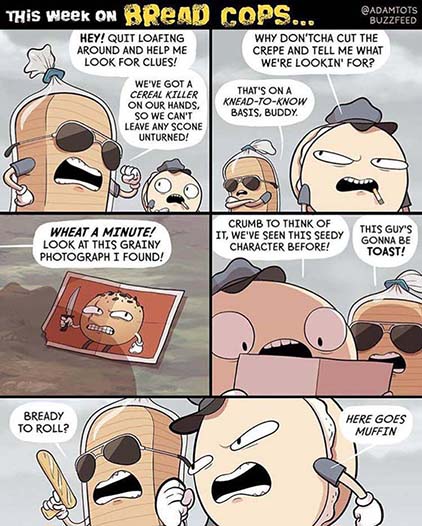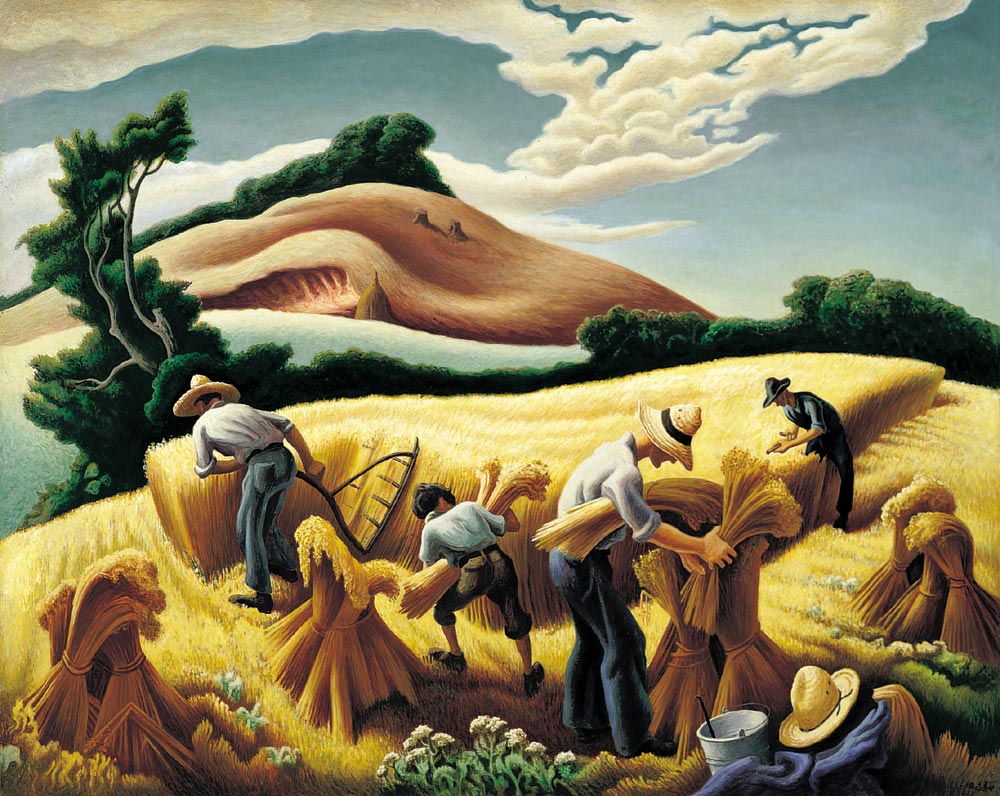September
September is Whole Grains Month and Time to Plant Winter Wheat
 Image Credit: Adam Ellis, Buzz Feed
Image Credit: Adam Ellis, Buzz Feed
Plant a School Yard Plot of Wheat
Oklahoma farmers start planting winter wheat this month. As a class plant a plot of wheat to harvest at the end of the school year.
- Students use the Scientific Study Format to design their experiment.
- Prepare a bed like you would any flower bed.
- Students scatter the wheat and water it.
- Students observe the wheat growing and record their observations in a journal.
- Students leave the wheat alone during the winter and start watering again in the spring.
- Students may also grow wheat in pots in a sunny window.
- Students keep the pots of wheat watered and cut it back occasionally with scissors.
- Students may also use wheat instead of grass seed on their Dirt Babies.
Wheat planted in the fall can also serve as a cover crop for your classroom garden. After harvesting the wheat in spring, leave the stubble, making sure you don't leave seeds. The stubble will decompose and provide nourishment for the soil while keeping weeds out.
For information about getting wheat seeds, check with your local grain elevator or feed store or contact your local OSU Extension office. Wheat seeds are also available at health food stores or in the health food section of your grocery store, marketed as wheat berries.
 Cradling Wheat, 1938 by Thomas Hart Benton
Cradling Wheat, 1938 by Thomas Hart Benton
Rain
Until I moved to western South Dakota, I did not know about the rain, that it could come too hard, too soft, too hot, too cold, too early, too late. That there could be too little at the right time, too much at the wrong time, and vice versa.
I did not know that a light rain coming at the end of a hot afternoon, with the temperature at 100 degrees or more, can literally burn wheat, streaming it on the stalk so it's not worth harvesting.
I had not seen a long, slow rain come at harvest, making grain lying in the swath begin to sprout again, ruining it as a cash crop...
I had not seen the whimsy of wind, rain, and hail; a path in a wheatfield as if a drunken giant had stumbled through, leaving footprints here and there. I had not seen hail fall from a clear blue sky. I had not tasted horizontal rain, flung by powerful winds.
I had not realized that a long, soaking rain in spring or fall, a straight-down-falling rain, a gentle, splashing rain is more than a blessing. It's a miracle.
An old farmer once asked my husband and me how long we'd been in the country. 'Five years,' we answered. 'Well, then,' he said, 'you've seen rain.'
- Kathleen Norris, from Dakota: A Spiritual Geography
Norris is writing about South Dakota, but she could be writing about Oklahoma wheat fields. Challenge students to find South Dakota on a map of the US and discuss why the weather there might be similar to ours. (Both states are located in the Great Plains. Extreme weather is typical of the Great Plains.) How is it different? (South Dakota is typically colder in the winter.) Wheat is also a major crop in South Dakota, as it is in Oklahoma.
Discussion Questions
- What is the central idea in this passage? What are the supporting details?
- Identify figurative language used in the passage and discuss their meaning
- Explain how the narrator's point of view influences how events are described.
